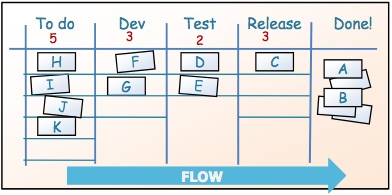
I find that the team roles and sprint structure are actually quite critical to organizational agility effectiveness. Sprints provide a structure to measure effectiveness, review progress and the process, and keep flow fast by keeping work products small. Team roles and a collaborative approach to solving work problems and building work products are critical to building high-quality solutions and out perform individuals by orders of magnitude.
I find that Kanban provides too much freedom in work product size, flow of items, and do not facilitate a team-based problem solving approach. Teams which have less experience with agility and working on small work products will find Kanban more difficult and may not immediately benefit because they do not change the fundamental issues within the organization.
The typical complaints about Scrum revolve around the meetings. Too many, too long, too boring, etc. This is a leadership and facilitation problem – not a Scrum problem. Avoiding them using Kanban will not solve the fundamental problems, only avoid them and temporarily make you feel better. In the long run however, getting software done on time, matching customer needs, with high-quality is the ultimate goal and Scrum does that better than any other.
